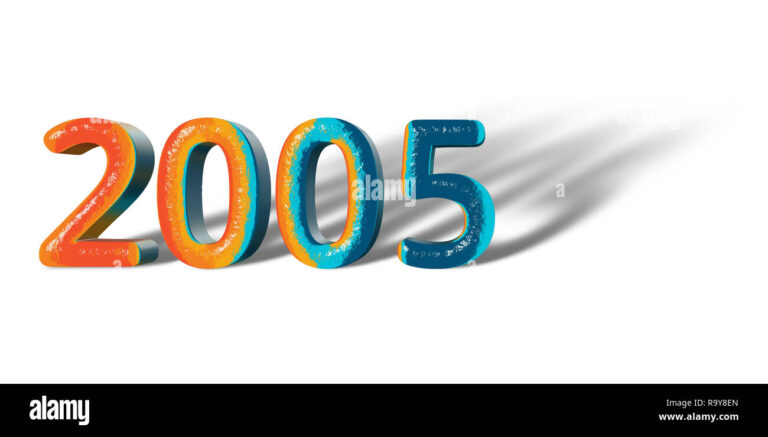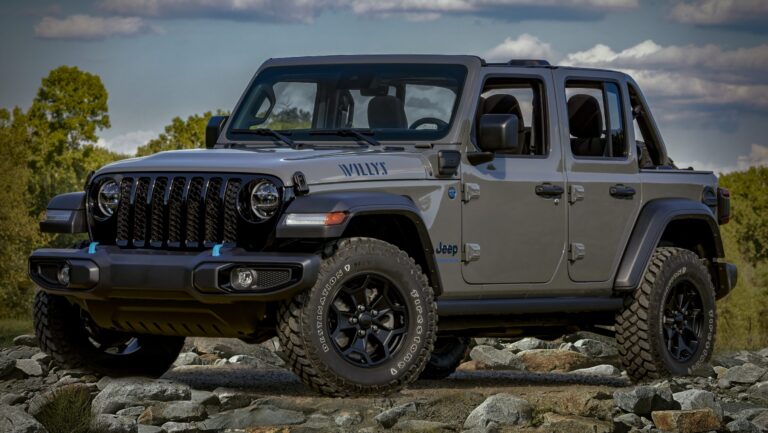1990 Jeep Wrangler Sahara For Sale: Your Guide to Owning an Icon
1990 Jeep Wrangler Sahara For Sale: Your Guide to Owning an Icon jeeps.truckstrend.com
Introduction: The Enduring Allure of the 1990 Jeep Wrangler Sahara
The open road, the call of the wild, and an undeniable sense of freedom – these are the hallmarks of the Jeep Wrangler. Among its storied lineage, the 1990 Jeep Wrangler Sahara holds a special place in the hearts of enthusiasts and collectors alike. As a quintessential representative of the YJ generation (1987-1995), the 1990 Sahara trim offers a unique blend of rugged capability, distinctive style, and a touch of refinement that sets it apart. It’s more than just a vehicle; it’s a piece of automotive history, a symbol of adventure, and a canvas for personalization.
1990 Jeep Wrangler Sahara For Sale: Your Guide to Owning an Icon
For anyone considering a 1990 Jeep Wrangler Sahara for sale, this article serves as a comprehensive guide. We’ll delve into what makes this specific model year and trim so desirable, key considerations when evaluating a potential purchase, practical advice for the buying process, and what to expect from the ownership experience. Whether you’re a seasoned Jeeper or a newcomer to the off-road world, understanding the nuances of the 1990 Sahara will empower you to make an informed decision and embark on your next great adventure.
The Legacy of the YJ Sahara: A Distinctive Chapter in Jeep History
The YJ generation, easily identifiable by its square headlights – a controversial but now iconic design choice – marked a significant evolution for the Wrangler. Introduced as a successor to the venerable CJ series, the YJ aimed to blend the traditional Jeep ruggedness with improved on-road comfort and safety features. The 1990 model year falls squarely within this period, benefiting from early refinements while retaining the raw, mechanical feel that defines classic Jeeps.
The Sahara trim package, in particular, was the premium offering of the YJ line. It wasn’t just an appearance package; it came with several functional and aesthetic upgrades that made it stand out. Named after the vast African desert, the Sahara was designed to evoke a sense of global adventure and refined capability. It represented the pinnacle of YJ luxury and off-road readiness straight from the factory, making it highly sought after by those who appreciate both form and function in their classic 4×4.
What Makes the 1990 Sahara Unique? Features and Specifications
The 1990 Jeep Wrangler Sahara boasted a distinctive set of features that elevated it above the standard YJ models. Key elements that prospective buyers should look for include:
- Exterior Enhancements: Body-color fender flares (often green, tan, or white), specific "Sahara" decals on the hood and side panels, integrated fog lights mounted on the front bumper, and typically wider 15-inch aluminum wheels with larger tires. Some models also came with unique side steps or tubular bumpers.
- Interior Appointments: The Sahara was known for its unique interior fabric, often a "spice" or "tan" color with distinctive patterns, and sometimes included door panels with map pockets and a center console with cupholders. The seats were often more heavily bolstered than standard YJs, offering improved comfort. A leather-wrapped steering wheel and upgraded sound system were also common.
- Engine Options: For 1990, the primary engine was the robust 4.2-liter (258 cubic inch) AMC inline-six-cylinder engine. This carbureted engine is known for its strong low-end torque, making it excellent for off-roading. While reliable, the carbureted system can sometimes be finicky and require more regular tuning than modern fuel-injected engines. Some late 1990 models might have seen the introduction of the more powerful and fuel-efficient 4.0-liter (242 cubic inch) fuel-injected inline-six, which became standard in 1991. Confirming the engine type is crucial for maintenance expectations.
- Drivetrain: The 1990 Sahara typically came with a choice of a 5-speed manual transmission (often the AX-15) or a 3-speed automatic transmission (TorqueFlite 999). Both are durable, but the manual offers more direct control and engagement, while the automatic provides easier city driving. Power was sent to a robust Command-Trac NP231 transfer case, offering both 2WD high, 4WD high, and 4WD low range for serious off-roading.
- Suspension: The YJ retained the traditional leaf spring suspension system, providing durability and articulation for off-road trails, albeit with a stiffer ride on pavement compared to later coil-sprung Wranglers.

These distinct features contribute to the 1990 Sahara’s unique character and explain its continued appeal among collectors and off-road enthusiasts.
Key Considerations When Buying a 1990 Jeep Wrangler Sahara
Purchasing a 30+ year-old vehicle, especially one designed for rugged use, requires careful inspection. Here are the critical areas to scrutinize:
- Rust: The Number One Enemy: YJ Wranglers, particularly those exposed to harsh climates or salted roads, are highly susceptible to rust. Thoroughly inspect the frame, especially around the spring perches, skid plates, body mounts, and rear bumper area. Also check the body tubs, floor pans, rocker panels, and wheel wells. Surface rust is manageable, but extensive frame rust can be a deal-breaker.
- Engine Health:
- 4.2L (258ci): Listen for knocking or excessive ticking. Check for oil leaks around the valve cover, oil pan, and rear main seal. Inspect the carburetor for proper function; rough idling or poor acceleration could indicate issues. A common modification is a "Nutter bypass" or a TBI/EFI conversion to improve reliability.
- 4.0L (242ci): If equipped, this engine is generally more robust. Look for the same oil leaks. Check for signs of overheating or neglected cooling system components.
- Transmission and Drivetrain:
- Manual (AX-15): Test all gears, ensuring smooth shifts without grinding. Listen for unusual noises from the clutch or transmission.
- Automatic (TF999): Check fluid color and smell (should be red, not burnt). Ensure smooth engagement and shifts.
- Transfer Case (NP231): Engage 4WD high and low. Listen for clunking or grinding. Ensure the linkage operates smoothly.
- Axles: Check for leaks around the differential covers and axle seals. Listen for humming or clunking noises which could indicate worn gears or bearings.
- Suspension and Steering: Look for worn leaf springs (sagging), broken shackles, or worn bushings. Check the steering box for leaks and excessive play in the steering wheel. Ball joints and tie rod ends are common wear items.
- Electrical System: Test all lights, gauges, wipers, heater, and radio. Aftermarket wiring can sometimes be a source of issues.
- Interior Condition: Assess the condition of the unique Sahara seats (tears, fading), carpets (water damage, mold), and dashboard (cracks). Ensure all gauges work.
- Soft Top/Hard Top: Inspect for rips, tears, brittle windows, or missing hardware on soft tops. For hard tops, check for cracks or missing seals.
- Modifications: Many YJs have been modified. Assess the quality of any lifts, aftermarket bumpers, or engine upgrades. Poorly installed modifications can lead to more problems than benefits.
- Service History: A well-documented service history is invaluable. It indicates a meticulous owner and provides insight into past maintenance and repairs.
The Buying Process: Tips for Prospective Owners
Finding and purchasing your ideal 1990 Jeep Wrangler Sahara requires patience and diligence.
- Where to Look:
- Online Marketplaces: Websites like Craigslist, Facebook Marketplace, eBay Motors, and specialty classic car sites (e.g., Hemmings, Bring a Trailer) are good starting points.
- Jeep Forums and Clubs: Enthusiast communities often have "for sale" sections where well-maintained vehicles are listed. This can also provide valuable insights from knowledgeable members.
- Specialty Dealers: Some dealerships specialize in classic 4x4s or restored Jeeps, though prices will likely be higher.
- Initial Inquiry: Ask for detailed photos, especially of the frame and common rust areas. Inquire about the vehicle’s history, mileage, and any known issues or recent repairs.
- Pre-Purchase Inspection (PPI): If you’re serious about a vehicle, especially one located far away, arrange for a PPI by an independent mechanic specializing in Jeeps or classic vehicles. This small investment can save you from significant future expenses.
- The Test Drive:
- Start the engine cold to listen for any startup noises.
- Drive at various speeds, including highway speeds if possible, to check for vibrations, steering wander, or transmission issues.
- Test the brakes for pull or pulsation.
- Find a safe, unpaved area to engage 4WD high and low.
- Listen for unusual noises from the suspension or drivetrain over bumps.
- Negotiation: Be prepared to negotiate based on the vehicle’s condition, mileage, and any necessary repairs identified during your inspection. Research current market values for similar models.
Ownership Experience: Living with a Classic YJ Sahara
Owning a 1990 Jeep Wrangler Sahara is a unique experience. It’s not like driving a modern SUV, but that’s part of its charm.
- Maintenance Expectations: Expect regular maintenance. These vehicles are relatively simple to work on, making them a great platform for DIY mechanics. Parts are generally readily available, either new aftermarket or used. Be prepared to address minor issues as they arise, particularly with older components.
- Fuel Economy: The 4.2L engine, especially with a carburetor, is not known for its fuel efficiency. Expect single-digit to low-teen MPG figures, particularly if it’s lifted or has larger tires.
- Driving Characteristics: On-road, the YJ’s leaf spring suspension provides a firm ride. Steering can feel less precise than modern vehicles, and wind noise is inherent, especially with a soft top. Off-road, however, the YJ shines. Its compact size, excellent approach/departure angles, and robust 4WD system make it highly capable on trails.
- Community: The Jeep community is vast and supportive. You’ll find a wealth of knowledge, advice, and camaraderie among fellow YJ owners, making the ownership experience even more rewarding.
Restoration vs. Daily Driver: Choosing Your Path
When considering a 1990 Sahara, you’ll likely fall into one of two camps:
- Restoration Project: If you find a rust-free or minimally rusted example, a full restoration can bring it back to show quality, preserving its originality and increasing its value. This is a time-consuming and often expensive endeavor, but incredibly rewarding.
- Daily Driver/Weekend Warrior: Many YJs are bought to be driven and enjoyed regularly. These might have minor imperfections, some tasteful modifications, and be maintained for reliability rather than concours perfection. This approach offers immediate gratification and allows for practical use of the Jeep’s capabilities.
Both paths are valid, but your intended use will significantly influence the type of Sahara you should seek out and the budget you’ll need.
Potential Challenges and Solutions
While owning a vintage Jeep is rewarding, it comes with its share of challenges:
- Rust: As mentioned, this is the biggest battle. Solutions include preventative undercoating, immediate repair of any rust spots, or, for severe cases, frame-off restorations with replacement frame sections or tubs.
- Carburetor Issues (4.2L): If the stock Carter BBD carburetor is problematic, solutions range from rebuilding it, installing a Weber carburetor upgrade, or converting to a more reliable aftermarket Throttle Body Injection (TBI) or Multi-Port Fuel Injection (MPI) system.
- Worn Components: Over time, almost every mechanical part will wear out. The solution is consistent maintenance and replacement with quality aftermarket or OEM parts. The good news is that parts availability for YJs is excellent.
- Electrical Gremlins: Older wiring can become brittle or corroded. Tracing and repairing faulty wiring, upgrading grounds, or even installing new wiring harnesses can resolve these.
- Safety Features: Compared to modern vehicles, the 1990 YJ lacks many contemporary safety features. Drive defensively, ensure brakes are in top condition, and consider adding aftermarket safety improvements if desired.
Price Table: Estimated Value of a 1990 Jeep Wrangler Sahara For Sale
The price of a 1990 Jeep Wrangler Sahara can vary significantly based on its condition, mileage, modifications, and location. This table provides a general guide:
| Condition Category | Estimated Price Range (USD) | Key Factors Influencing Price |
|---|---|---|
| Poor | $3,000 – $6,000 | Significant rust (frame/body), non-running engine or major mechanical issues, heavily neglected interior/exterior, extensive repairs needed. Ideal for full restoration projects or parts vehicles. |
| Fair | $6,000 – $10,000 | Moderate rust, running but needs mechanical attention (e.g., engine leaks, transmission issues), worn interior, faded paint, some missing components. Suitable for a rolling restoration or a budget daily driver with work. |
| Good | $10,000 – $18,000 | Minimal to no significant frame rust, running strong with minor mechanical needs, presentable paint (original or older repaint), decent interior, all major components functional. A good candidate for a reliable daily driver or a solid base for minor upgrades. |
| Excellent | $18,000 – $30,000+ | Rust-free frame and body, strong running engine (original or well-documented swap), smooth transmission, clean interior with intact Sahara specific elements, high-quality paint, low mileage, comprehensive service records, often unmolested or professionally restored. Collector quality. |
| Collector/Show | $30,000 – $50,000+ | Concours condition, extremely low original miles, highly original or meticulously restored to factory specifications, all Sahara-specific features present and perfect, documented history. Rarely found. |
Note: Prices are estimates and can fluctuate based on market demand, regional differences, and specific vehicle features (e.g., hardtop vs. soft top, specific engine/transmission combo, desirable modifications).
Frequently Asked Questions (FAQ)
Q1: Is the 1990 Jeep Wrangler Sahara a good daily driver?
A1: It can be, but it requires realistic expectations. It’s not as comfortable, quiet, or fuel-efficient as modern vehicles. For shorter commutes or as a weekend vehicle, it excels. For long highway drives, it can be tiring. Reliability depends heavily on prior maintenance.
Q2: Which engine is better: the 4.2L or the 4.0L?
A2: The 4.0L (introduced late 1990/early 1991 for some models) is generally considered superior due to its fuel injection, higher horsepower, and better fuel economy. However, the 4.2L is a torque monster, simple to work on, and highly durable if properly maintained, especially if upgraded from the original carburetor.
Q3: What are the common rust spots on a YJ Wrangler?
A3: The frame (especially near the rear shackle mounts, skid plates, and body mounts), floorboards, rocker panels, rear bumper, and areas around the windshield frame and cowl are highly prone to rust.
Q4: Are parts readily available for a 1990 YJ Sahara?
A4: Yes, parts availability is excellent. The YJ shares many components with other Jeep models, and the aftermarket is robust, offering everything from OEM replacements to performance upgrades.
Q5: What’s the biggest difference between a YJ and a CJ?
A5: The most obvious visual difference is the YJ’s square headlights versus the CJ’s round ones. Mechanically, the YJ introduced wider leaf springs for better stability, a slightly wider stance, and more modern interior features and safety aspects than the CJ.
Q6: Can I take a 1990 Sahara off-roading?
A6: Absolutely! The 1990 Sahara, with its robust drivetrain and solid axles, is inherently capable off-road. Even in stock form, it can handle moderate trails. With a modest lift and larger tires, it becomes a formidable off-road machine.
Conclusion: Your Journey to Owning a Legend
The 1990 Jeep Wrangler Sahara for sale represents a unique opportunity to own a piece of American automotive history. It’s a vehicle that embodies adventure, freedom, and a timeless design that continues to captivate. While purchasing a classic vehicle requires diligence and a realistic understanding of its maintenance needs, the rewards of owning and driving a YJ Sahara are immeasurable.
From its distinctive Sahara trim features to its rugged off-road prowess, this iconic Jeep offers an unparalleled driving experience. By carefully considering the factors outlined in this guide – from meticulous inspections to understanding the ownership commitment – you can confidently navigate the market and find the perfect 1990 Jeep Wrangler Sahara to start your next chapter of exploration. Embrace the spirit of the open road, because with a YJ Sahara, the adventure never truly ends.



